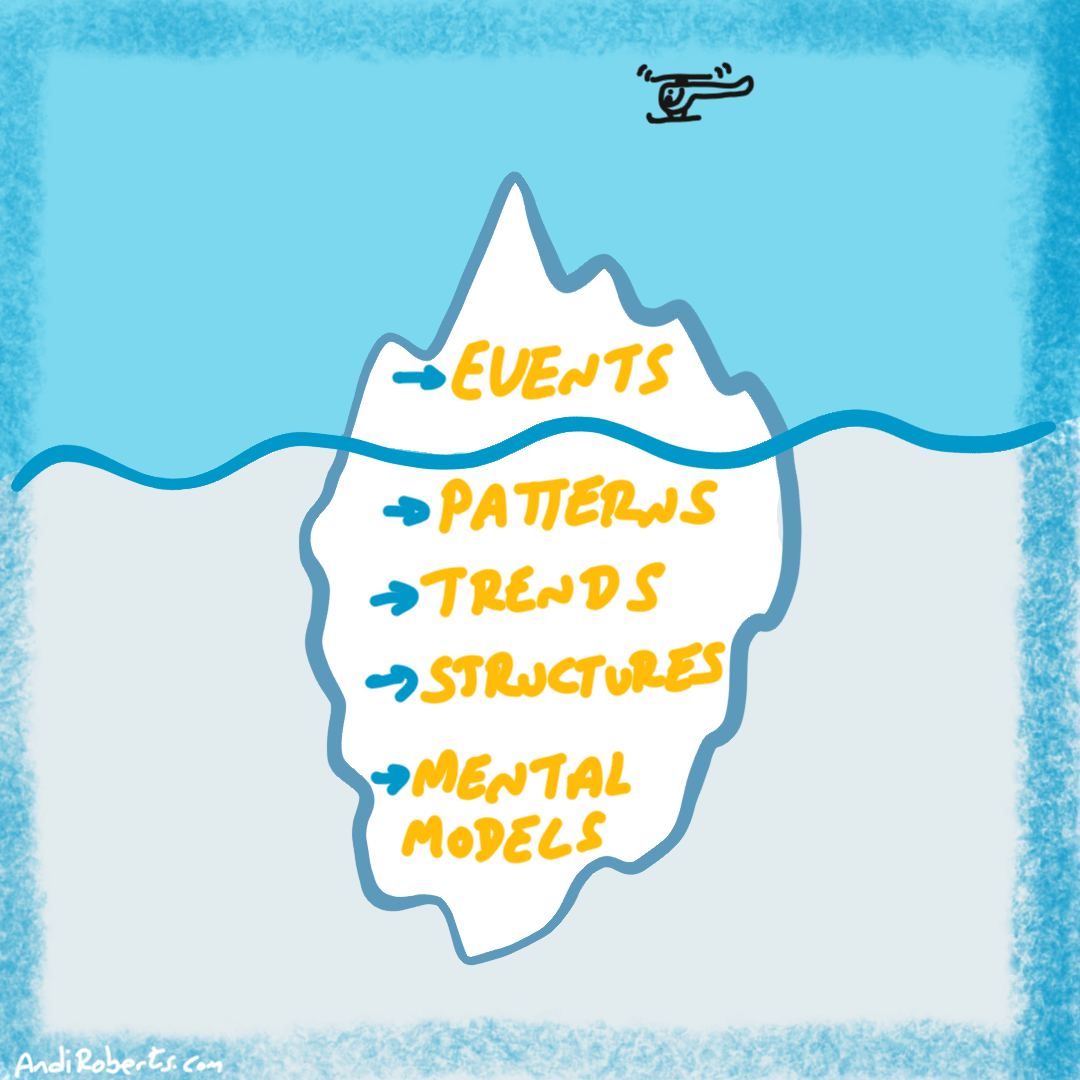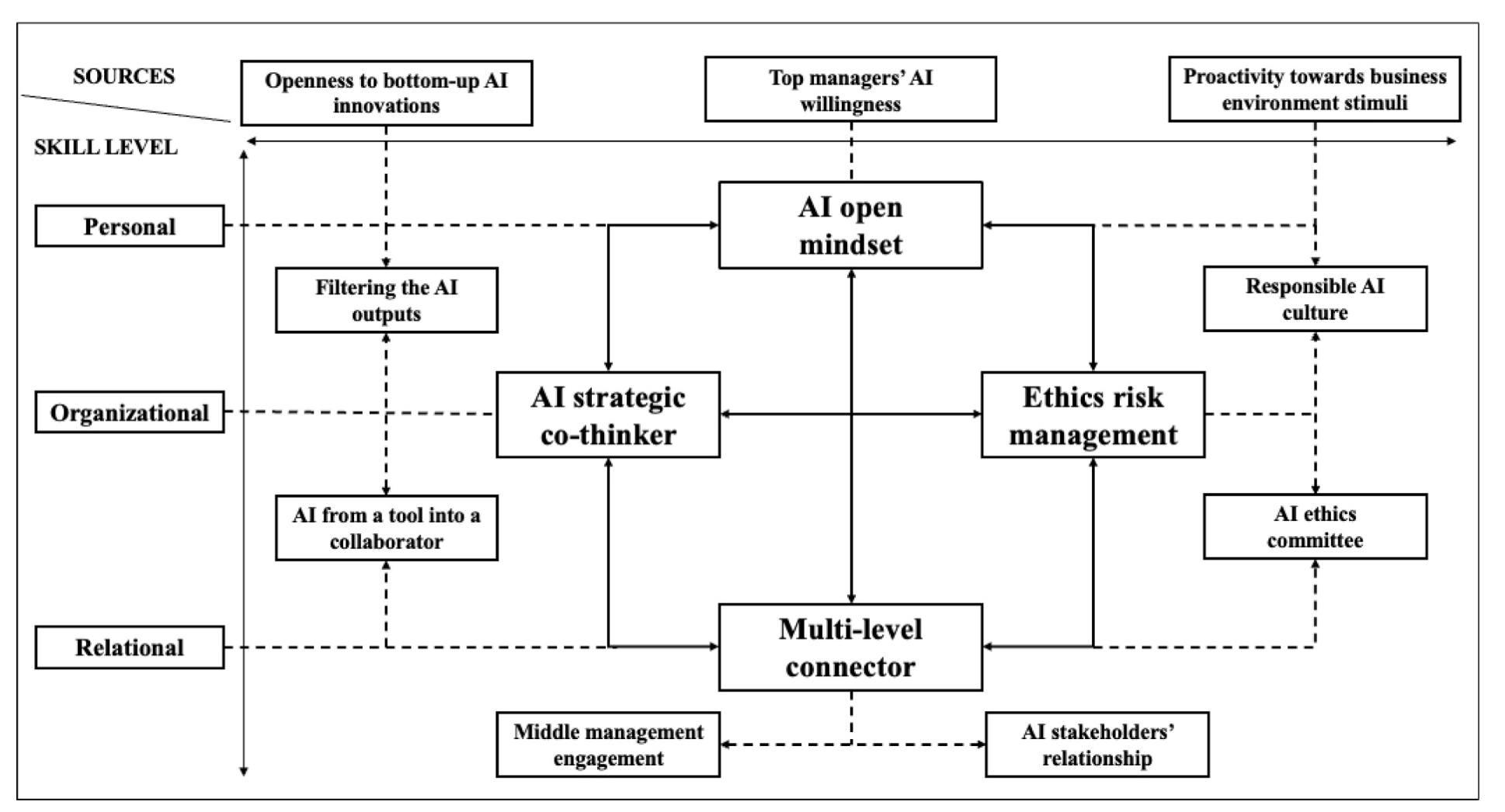The belief that a transformation programme can save an organisation remains one of the most persistent myths in leadership. It promises clarity in moments of uncertainty and order in situations that feel unmanageable. When performance stalls, when markets shift, or when culture feels stuck, leaders often reach for the familiar solution: design a transformation, give it a name, draw a roadmap, appoint a programme team, and assure everyone that progress is finally under way.
This instinct has deep roots. For decades, organisational life was shaped by the assumption that large scale change could be designed, planned, and implemented. Senior leaders were taught that if they analysed the problem, defined the future state, and executed the steps in between, the system would obediently follow. Transformation became a structured event rather than a social process. It became something leaders delivered to the organisation, not something the organisation discovered for itself.
Yet this belief rests on an outdated view of how human systems behave. Organisations are not engineered machines. They are complex adaptive systems made up of people with their own judgements, histories, incentives, and interpretations. Change does not cascade neatly from plan to action. It emerges from countless interactions between individuals and groups who are constantly adjusting what they think, how they work, and what they prioritise. The patterns that shape organisational life arise from relationships, not from diagrams.
Still, the myth survives because it offers reassurance. A transformation plan looks decisive. It gives the impression that uncertainty has been tamed and that leaders are in control of the path ahead. It provides a sense of progress that feels concrete. Milestones can be tracked, dashboards updated, and programme governance installed. This creates the appearance of movement even when the underlying system has not changed at all.
The paradox is that the very tools designed to manage change often undermine the possibility of real transformation. When leaders rely too heavily on plans, they shift attention away from the adaptive work that matters most. The focus turns to activities rather than interactions, to reporting rather than reflection, and to compliance rather than curiosity. The organisation becomes better at following the plan than responding to the reality in front of it.
A complex adaptive systems perspective invites us to see the limits of the transformation myth. It challenges the assumption that change can be predetermined and controlled. It shifts the emphasis from planning to patterning, from structure to sensemaking, and from designing change to creating the conditions in which change can take root. In this view, transformation is not an event. It is an emergent property of how people work, think, and interact.
Why the myth endures
The belief that a transformation programme can save an organisation is not sustained by naivety. It endures because it serves multiple psychological, organisational, and political needs. It provides comfort in moments of uncertainty, legitimacy in environments that reward predictability, and cover for leaders who are expected to display certainty regardless of the situation. The myth persists not because it works, but because it fits the expectations surrounding leadership.
A major reason for its endurance is that transformation programmes offer psychological safety. When confronted with ambiguity, leaders feel pressure to demonstrate control. A transformation plan provides that sense of order. It takes a messy situation and converts it into a defined set of stages, milestones, and deliverables. The detail of the plan creates the impression that uncertainty has been managed. This appearance of control is often more soothing than the reality.
Organisations reinforce this instinct. They are often designed to value coherence over curiosity. Governance routines demand predictability. Progress reviews focus on what has been delivered, not what has been learned. Leaders are evaluated on their ability to commit and deliver, even when the environment makes precise delivery unrealistic. Within this logic, a transformation programme becomes a badge of competence. It signals that the leader has taken decisive action and that the situation is being managed responsibly.
Large consultancies also play a powerful role in sustaining this myth. Transformation is sold as a service. Consultancy decks promise certainty, disciplined execution, and clarity of direction. They offer models, maturity assessments, and roadmaps that appear reassuringly concrete. This appeals to boards and executives under pressure to demonstrate decisive action. Buying a transformation programme effectively outsources the risk. It allows leaders to present a narrative that expert help has been secured and that the path ahead has been validated.
This outsourcing of risk provides comfort. It shifts accountability onto the consultancy and away from internal leaders. If the transformation falters, responsibility can be shared, reframed, or redirected. The external partner becomes both a shield and a symbol of action, reducing personal exposure and reinforcing the belief that complexity can be managed through design.
There is also a deeper identity issue. To acknowledge that complex change cannot be fully planned is to acknowledge the limits of control. Many leaders were promoted for their ability to offer answers and reduce uncertainty. Admitting that the system is inherently unpredictable can feel like a threat to legitimacy. The transformation programme becomes a way to maintain authority and preserve the appearance of control.
Over time, these pressures create a culture where adaptation is perceived as drift. Deviations from the plan are treated as failure. Teams hesitate to raise early warning signs. Leaders avoid adjusting course. The system becomes more committed to protecting the programme than understanding what the environment is revealing. The myth survives because it keeps discomfort at a distance, even when it distances the organisation from reality.
The real cost of believing this works
Relying on transformation programmes as the engine of organisational change carries significant costs. These costs can remain hidden at first because the programme itself creates a strong impression of progress. But over time, they erode learning, responsiveness, cultural health, and strategic clarity. The organisation becomes disciplined in following the plan but less capable of noticing what the system is telling it.
The first cost is learning. Transformation programmes often prioritise alignment over awareness. Teams focus on meeting milestones rather than understanding what is shifting around them. Insight is displaced by activity. Questions are postponed in favour of updates. The organisation becomes more skilled at performing change than exploring it.
The second cost is responsiveness. Once a transformation programme is launched, it quickly becomes difficult to adjust. Plans turn into commitments and commitments into constraints. When people notice emerging issues that do not fit the roadmap, they hesitate to raise them for fear of appearing obstructive. Important signals remain muted. Opportunities for adaptation are missed because the system is working to the plan rather than with the situation.
There is also a cost to honesty. Transformation programmes often create a performance layer where people report progress because progress is expected. Issues are softened or reframed. Delays are attributed to external factors rather than assumptions that no longer hold. The larger the programme, the larger the gap between the official narrative and lived experience.
The cultural cost is equally important. When deviation is treated as failure, organisations suppress the behaviours required for adaptation. People become cautious rather than curious. They hesitate to share early feedback, raise difficult questions, or explore alternatives. Compliance replaces participation. The organisation may appear orderly, but its capacity to learn is weakened.
There are political costs as well. Large programmes often centralise authority in programme offices or external partners. This reduces local autonomy and undermines the sense of ownership that supports meaningful change. When people feel that transformation is being done to them rather than with them, engagement diminishes. Once the consultants leave, capability often leaves with them.
Finally, the personal cost for leaders is real. When leaders publicly commit to a fixed plan, they often feel obliged to defend it even as circumstances shift. This can create defensiveness rather than curiosity and encourage leaders to manage optics rather than learning. The energy spent preserving the plan could be spent responding to emerging reality.
Ultimately, the greatest cost is that the organisation may move without truly changing. It may deliver the outputs of the programme but fail to shift the underlying relationships, behaviours, and meaning structures that define real transformation. Progress becomes performance, not evolution.
What the research says about how change really works
Research on complex adaptive systems offers a different way of understanding organisational change. It shifts attention from the mechanics of delivery to the dynamics of interaction. Instead of viewing transformation as a linear sequence that can be planned and executed, CAS research shows that change unfolds through relationships, feedback, and emergence.
A central principle is that systems evolve through interaction. When people connect, share information, interpret events, and adjust their behaviour, the system shifts. These local interactions create global patterns that are often unpredictable. Transformation is therefore not the product of a single intervention but the cumulative effect of many small adjustments across the organisation.
Another principle is self organisation. Complex systems organise themselves in response to their environment. They do not wait for permission from the top. When leaders attempt to impose change, the system adapts around the intervention rather than through it. Meaningful change occurs when leaders shape the conditions that support new patterns, not when they attempt to dictate the patterns themselves.
Non linearity is also central. Small actions can produce large effects, and large actions may produce very little change. Transformation programmes often assume proportionality. CAS research suggests otherwise. Progress depends on identifying leverage points, testing ideas, observing consequences, and amplifying what works.
Feedback loops are another defining feature. In living systems, behaviour changes when feedback is timely and meaningful. Traditional transformation programmes often slow or distort feedback, which reduces the organisation’s ability to learn. When feedback loops are short and genuine, the system becomes more adaptive.
Diversity also plays a key role. Complex systems learn through variation. They rely on multiple perspectives and competing interpretations. Transformation programmes that push for uniformity reduce the system’s ability to explore alternatives or respond creatively.
Finally, CAS research highlights emergence. Patterns form that are not designed but arise from the interactions within the system. Culture, norms, and shared meaning all emerge this way. They cannot be mandated. They must be cultivated through experience.
Taken together, these principles show that in complex environments, change is not delivered. It is discovered. Plans remain useful, but they act as intentions rather than instructions. Progress is made through participation and learning, not prediction and control.
What leaders can do
If transformation in complex adaptive systems cannot be engineered through detailed plans, what can leaders rely on instead? The answer is not to abandon planning, but to rethink how influence works. Leaders create progress by shaping the conditions in which people can adapt, learn, and coordinate.
1. Shape conditions rather than prescribe solutions
In complex systems, outcomes emerge from interaction, not instruction. Leadership therefore becomes an act of cultivating the right environment rather than dictating the right answer. This means focusing on purpose, values, and minimal constraints that provide coherence without limiting creativity. Leaders can articulate why the work matters, clarify a small number of non negotiables, and remove obstacles that hinder collaboration. By doing so, they support self organisation and allow teams to generate solutions that fit their local context. When conditions are well shaped, people coordinate naturally. When conditions are poor, even the most perfectly designed plan will struggle to take hold.
2. Encourage many small moves rather than one big push
Complex systems respond better to variation than uniformity. Large scale interventions often falter because they rely on the assumption that the system will behave predictably. Leaders can instead encourage a portfolio of small, low risk experiments. Each experiment becomes a probe into the system, revealing how people respond, what constraints matter, and where opportunities for leverage might lie. Small moves create fast learning and allow organisations to adjust without becoming locked into a single path. They build momentum through discovery rather than decree. Over time, the patterns that work can be amplified, allowing real transformation to emerge from practice rather than prediction.
3. Shorten feedback loops and make them visible
In a complex system, the timing and quality of feedback determine how quickly the organisation can adapt. Traditional transformation programmes often slow feedback down through layers of reporting and approval. Leaders can counter this by bringing people closer to signals. They can encourage honest conversations about what is being noticed, invite teams to share early lessons, and design routines that surface weak signals rather than bury them. Visible feedback helps the system correct itself before issues become crises. It also reinforces a culture where learning is valued more than certainty. When feedback loops are short, the organisation becomes more responsive and resilient.
4. Build spaces for collective sensemaking
No single person sees the whole system or understands all the forces shaping a change. In complex environments, insight is distributed. Leaders can support this by creating regular spaces where people come together to explore what they are observing, what feels uncertain, and what might be emerging. These are not status meetings. They are reflective conversations where different perspectives meet and new meaning is formed. Collective sensemaking helps the organisation align without relying on rigid control. It strengthens shared awareness and enables people to act with coherence even when formal instructions are limited. Over time, it builds a collective intelligence that no transformation programme can replace.
5. Support diverse perspectives and local autonomy
Complex systems rely on diversity to learn. When diverse perspectives are welcomed, the organisation gains access to a broader range of interpretations and possibilities. Leaders can encourage this by asking for dissenting views, inviting people with different backgrounds into important discussions, and allowing teams closer to the work to shape their own ways of responding. Local autonomy does not mean abandoning alignment. It means creating alignment through shared purpose rather than strict procedure. This allows solutions to be shaped by those who understand their context best. Variation becomes a source of innovation rather than a deviation to be corrected.
6. Respond to what emerges, even when it disrupts the plan
Plans provide direction, but they cannot remove uncertainty. When reality diverges from expectation, leaders face a choice: protect the plan or pay attention to what the system is revealing. In complex environments, responsiveness is a strength. Leaders can treat unexpected outcomes as valuable information rather than errors. They can explain openly why the path needs to change and what they are learning from emerging patterns. This builds trust and normalises adaptation. It also shifts the culture from one that values prediction to one that values inquiry. The organisation becomes better equipped to navigate uncertainty without losing sight of its purpose.
7. Pay attention to interactions, not just actions
In complex systems, the quality of interaction shapes the quality of outcomes. How people coordinate, how information flows, how conflict is handled, and how decisions are made all matter as much as the specific tasks being performed. Leaders can attend to these relational dynamics by noticing patterns in communication, asking how teams are experiencing collaboration, and adjusting routines that create friction or fragmentation. Small shifts in interaction can create large shifts in performance. When relationships strengthen, shared meaning grows, and the organisation becomes more capable of responding to change. Transformation becomes a social achievement, not a procedural one.
Closing reflection
The belief that a transformation programme can save an organisation belongs to an earlier view of leadership. It assumes that complexity can be mastered through design and that uncertainty can be controlled through planning. Yet the environments organisations now inhabit operate through interdependence and unpredictability. In these conditions, transformation cannot be delivered through a roadmap. It must be discovered through participation, interaction, and learning.
Letting go of the transformation myth does not mean abandoning ambition. It means pursuing change in a way that matches the nature of the system. It asks leaders to focus less on perfect plans and more on nurturing the relationships and conditions that allow new patterns to form. It requires courage, honesty, and humility about what cannot be known in advance.
Real transformation is quieter and more distributed than most programmes suggest. It takes shape in conversations, experiments, and small acts of coordination. It spreads through meaning, not mandate. Leaders do not need to control every step. They need to help their organisations stay attentive to what is emerging and willing to learn from it.
Transformation, in the deepest sense, is not something leaders deliver.
It is something they host
Do you have any tips or advice for making transformations a success?
What has worked for you?
Do you have any recommended resources to explore?
Thanks for reading!





Leave A Comment